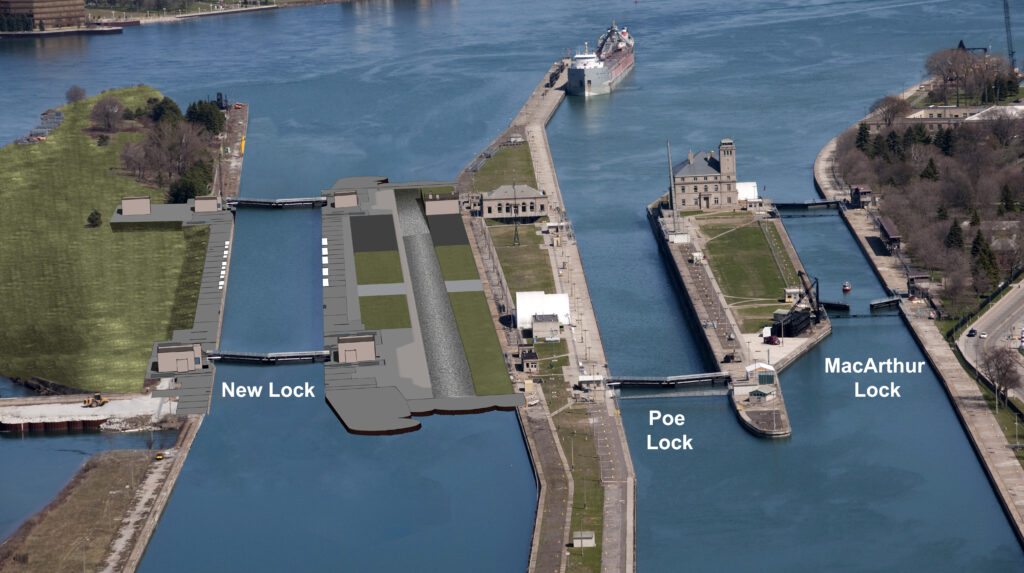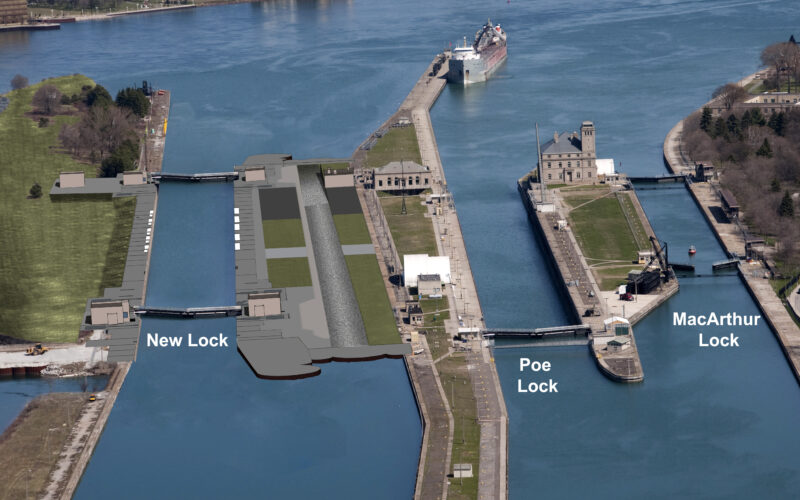(WASHINGTON) — Five months after the beginning of the fiscal year, Congress unveiled its final spending plan for a handful of government agencies Sunday. These include programs of critical importance to the Great Lakes-St. Lawrence Seaway maritime industry.
How did we get here?
As a reminder, the federal fiscal year begins on Oct. 1 and ends on Sept. 30 of the subsequent year. At the beginning of each calendar year, Congress begins work to develop 12 regular appropriation bills to fund federal agencies and programs for the coming fiscal year. Each of the 12 appropriation bills funds a different portion of the federal government. Hypothetically, all 12 funding bills should be enacted by Oct. 1; however, this is seldom accomplished.
Since Sept. 30, Congress has enacted a series of stop-gap funding bills to continue prior-year funding for federal agencies, enabling them to continue to operate. These stop-gap funding bills are known as “continuing resolutions.” In concept, continuing resolutions are meant to buy time for Congress to reconcile differences and finalize spending plans.
Appropriation bills released Sunday
While Congress has not completed work on all 12 appropriation bills, on Sunday it released the final compromise versions of six of the bills. These include the Energy and Water Development Appropriations Bill, which funds the Army Corps of Engineers’ Civil Works program; and the Transportation, Housing and Urban Development Appropriations Bill, which funds the Maritime Administration (MarAd) and Great Lakes St. Lawrence Seaway Development Corp.
This is the first time the public has seen final compromise provisions for funding these agencies:
Maritime Administration / Port Infrastructure Development Program
Congress has slashed baseline funding for MarAd’s Port Infrastructure Development Program (PIDP) from last year’s level of $212 million to $120.46 million in fiscal year 2024. Of the amount provided, only $50 million is available for competitive discretionary grants. The remaining $70.46 million is earmarked to 22 specific projects in 12 states. None of these earmarked projects are in the Great Lakes region.

It is important to note that the 2022 Infrastructure Investment and Jobs Act (IIJA) provided advance appropriations of $450 million/year to the PIDP program between 2022-2026. These funds are still intact and not impacted by the new cuts.
Thus, MarAd will have approximately $500 million to distribute in its FY 2024 PIDP funding round.
Great Lakes St. Lawrence Seaway Development Corp.
Congress fully funded the Biden administration’s funding request of $40.28 million for the Great Lakes St. Lawrence Seaway Development Corp. Of the total, $16.3 million is to be used for the Seaway’s infrastructure renewal program and $1 million is provided for the agency’s trade and economic development activities.
Great Lakes Authority
Congress provided $5 million in start-up funding for the Great Lakes Authority (GLA). This is the full amount requested by the Biden administration. The GLA is a new regional economic development agency authorized by Congress in 2022. The new entity has yet to be stood up by the Biden administration; however, the new funding will likely stimulate next steps. The new agency will have a nine-person board, with one person appointed by the president and one by each of the governors of the eight Great Lakes states.
Soo Lock construction
Congress provided $257.42 million for FY 2024 to continue construction of the new Soo Lock project. The Biden administration had requested $235 million for the project in its budget proposal. The new funds bring total project funding to $1.91 billion. Depending on future funding, the Corps of Engineers hopes to complete construction by 2030. The project is currently estimated to cost about $3 billion.
Harbor maintenance / dredging
The final spending plan for the Corps of Engineers includes maintenance dredging and breakwater repair work at scores of Great Lakes ports. With a few exceptions, Congress provided the amounts requested in the Corps’ FY 2024 budget proposal. However, these are not the final amounts that will be spent at Great Lakes harbors.
The Corps’ budget also includes $600.45 million of so-called “additional funds” for operation and maintenance activities. This is essentially a “bucket” of flexible money that the Corps will later assign to projects around the United States. Once the final spending bill is enacted, the Corps typically takes two months to publish a final “work plan” that details where these additional funds will be spent.
What Great Lakes navigation priorities are still outstanding?
Congress has yet to finalize the FY 2024 Homeland Security Appropriations Act, which funds the U.S. Coast Guard and its programs. Of key focus is funding to begin construction of a new heavy icebreaker in the Great Lakes. The Coast Guard asked Congress to approve $55 million in the agency’s FY 2024 budget to begin work on the vessel.
Will Congress reach compromise and pass the Homeland Security Appropriations Bill? At this time, its anyone’s guess.
Next steps
In coming days Congress will attempt to pass the six appropriation bills released Sunday. The current stop-gap funding for these agencies expires on March 8.
– American Great Lakes Ports Association

